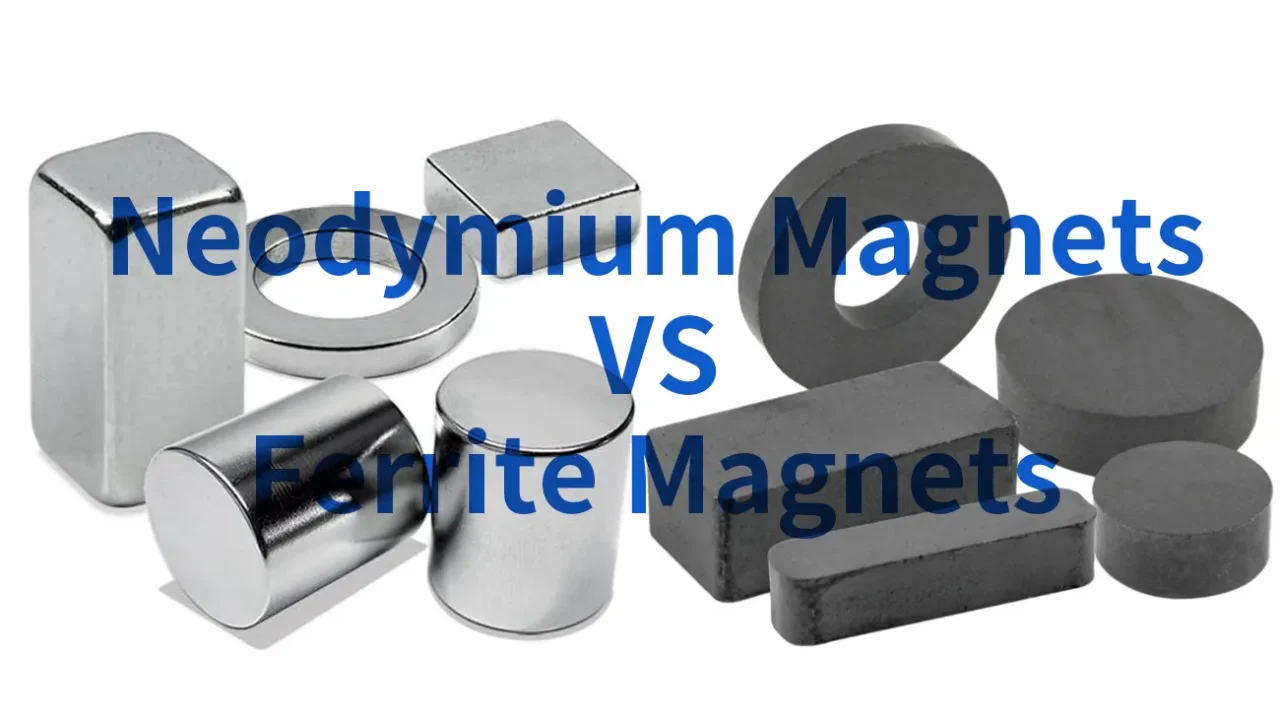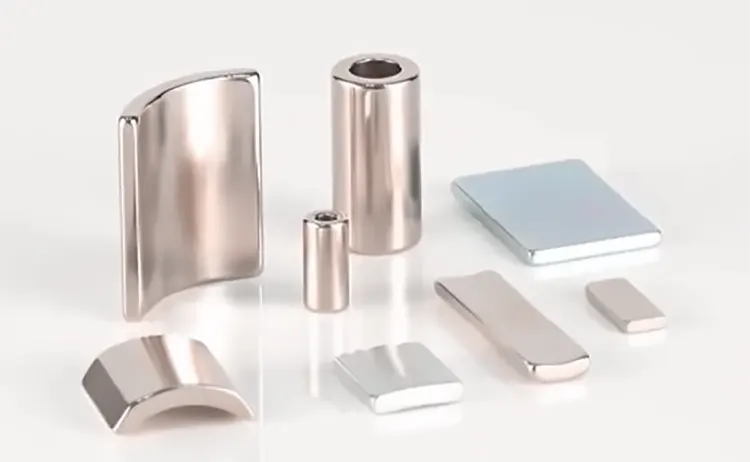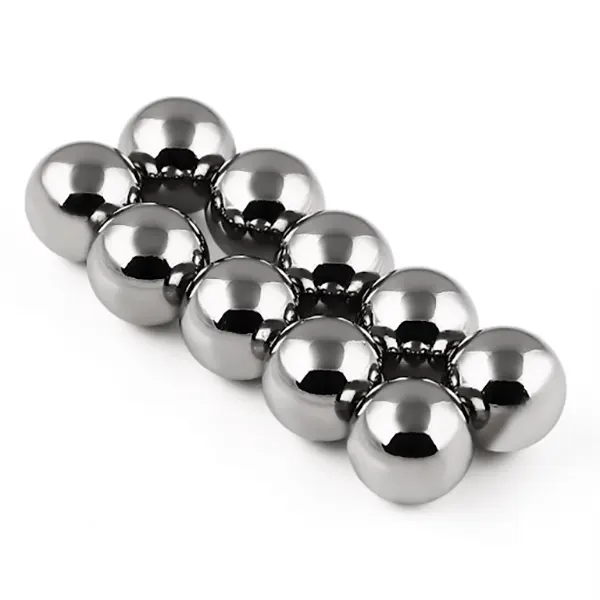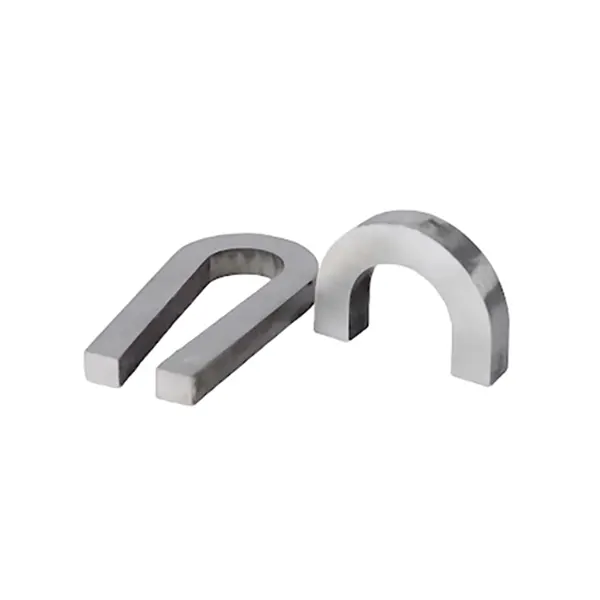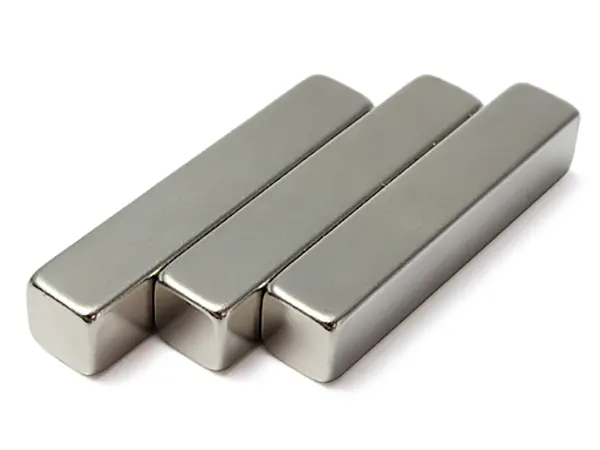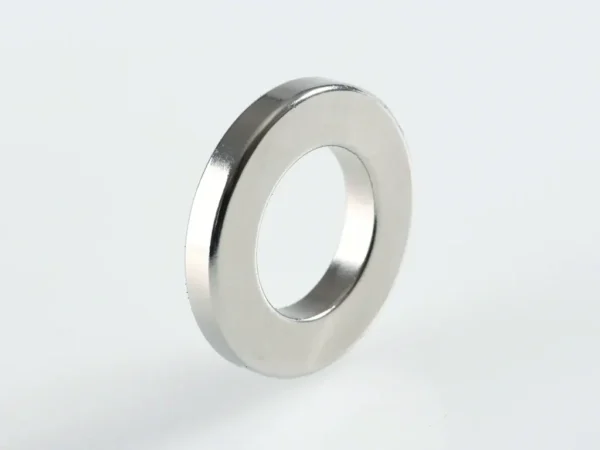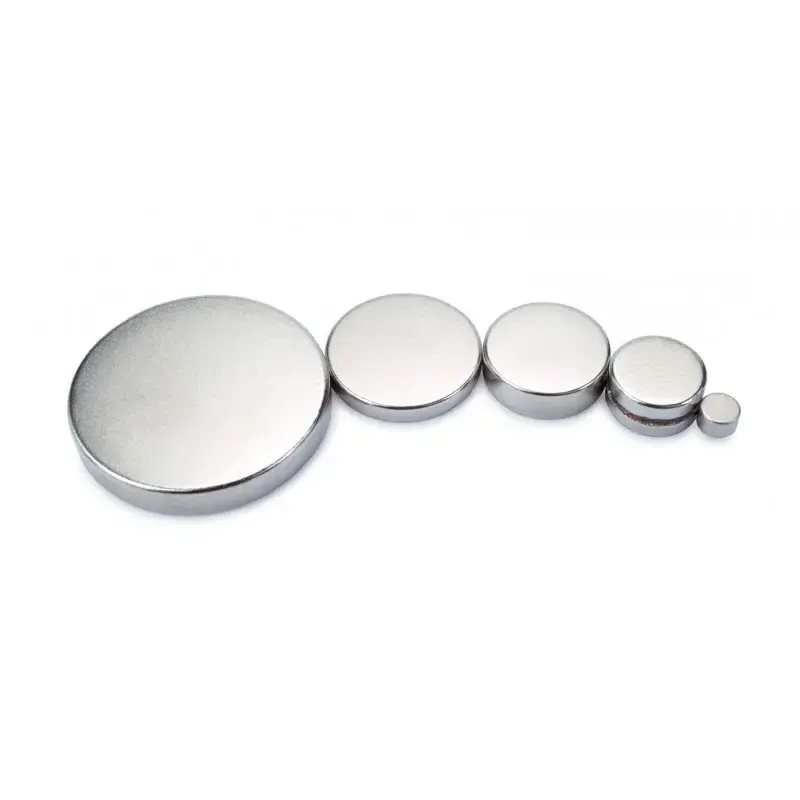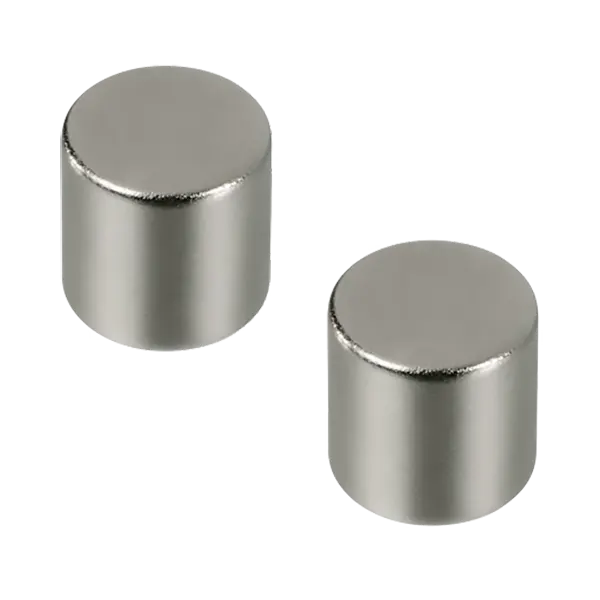For a given application, the choice between ferrite magnet vs neodymium is very quickly made complex by many factors. Although superficially it may appear to be an easy choice to make, there are things to be taken into account such as cost, efficiency, volume, and production as part of the final choice to make.
In the case of optimum magnetic field efficiency Neodymium magnets are the magnets of preference as they offer a magnetic field intensity up to 20 times higher per volume unit than ferrite magnets. However, ferrite magnets are quite inexpensive and have an electromagnetic field 2-3 times more efficient at the same price than do the neodymium magnets.
Engineers are able to select an appropriate magnet with regard to the demands of the project, not only efficiency and cost, but also some of the aspects such as system weight, system volume, the system design, the system appearance, and so on. All the input variables are most contributive to final material selection. Today we’ll cover key differences in strength, cost, temperature resistance, and applications of neodymium vs ferrite magnets so you can find the perfect magnet for your specific needs.
What is a Neodymium Magnet?
Also called Neo magnets NdFeB, a neodymium magnet is a class of permanent magnets made from alloy of neodymium iron and boron. While other rare-earth-based magnets (e.g., samarium cobalt) are also available, neodymium is the most popular. They produce a higher magnetic field, hence a more optimum performance. Despite their intrinsically high magnetic strength, they are also very light.Even if you’ve heard of neodymium magnets, though, there are probably some things you don’t know about these popular rare-earth magnets.
Neodymium magnets were developed in the early 1980s by General Motors and Sumitomo Special Metals. Companies found out that, by mixing neodymium with minor amounts of iron and boron, they could make an extremely powerful magnet. General Motors and Sumitomo Special Metals have subsequently published the first neodymium magnets in the world, which are a less expensive form of the other rare-earth magnets available currently.
Neodymium magnets are composed of tetragonal crystals Nd2Fe14B. These building blocks are also further described in the broad framework of advanced fabrication techniques involving, predominantly, melting and alloying of the basic materials. The alloy is then milled into a very fine powder (Powder Metallurgy or Hydrogen Decrepitation), subsequently compacted into matrix in the presence of a high magnetic field, in order to maintain the particle alignment and thus to enhance the magnetic characteristics. It is then subjected to a sintering procedure by heating the compacted mass to a high temperature, which converts the compacted mass into a consolidated one. A protective final coating of nickel, zinc, or epoxy coating is finished for corrosion prevention and physical impact (neodymium magnets are brittle and susceptible to oxidation) following the magnetic thin film depositions.
In general, neodymium magnets are a revolutionary discovery, as they offer an option tradeoff between high magnetic field strength and usefulness and miniaturization. They have also moved in their industries by enabling the creation of micro-miniature high-performance devices, and systems. Even though these may require increased levels of care and costs, they provide the best performance and therefore are used for complex tasks. Whether you’re working on cutting-edge technology, renewable energy solutions, or precision medical devices, neodymium magnets offer the power and reliability needed to succeed.
Characteristics of Rare Earth Neodymium Magnets.
Neodymium magnets (of the rare earth magnet family) are famous for their supermagnetism. Their hallmark characteristics are maximum stress strength, miniaturization, and universality, which allow them to create an irreplaceable position in a variety of industries.
The best feature of neodymium rare earth magnets is the high magnetic force. They are the highest presently available rated permanent magnets that are commercially available, that are able to generate a field several orders of magnitude larger than the SMCO magnet, ferrite, or alnico magnets. This tremendous strength lets them attain high performance even in compact dimensions, a scenario that is especially important in situations where space is constrained, e.g., in the future electronic and electric vehicles.
Neodymium magnets are favored for their high coercivity, which makes them resistant to demagnetization even in harsh conditions.s This robustness guarantees reliable performance, and especially in critical applications, such as aerospace engineering, wind turbines, and automobile parts. Due to their resistance to harsh environments they are a good choice for reliance systems.
Moreover, Nd magnets provide high degrees of design freedom and are commercially available in different shapes and dimensions (discs, blocks, rings and custom neodymium magnets forms). This multiple applicability renders them to many different application scenarios, ranging from precise instruments to robotic arms in industrial applications.
Nevertheless, this superiority comes with some shortcomings, neodymium magnets. Their sensitivity to high temperatures, and the resulting demagnetization when subjected to very high temperatures, are the main downpoints. Moreover, due to their brittleness, they are susceptible to breaking or shattering with stress, if it is not handled carefully. These aspects should be taken into account when neodymium magnets are used in miniaturized applications where not only performance but also reliability is important.
Advantages and Disadvantages of Neodymium Magnets
Below is a comparative table summarizing the strengths and limitations of neodymium magnets:
| Advantages | Disadvantages |
|---|---|
|
|
Neodymium magnets represent the technological forefront of magnetism, offering superior energy density and lifespan. Although their limitations must be critically evaluated, especially in harsh environments or for cost control, their performances and their possibilities make them irreplaceable in a wide variety of industries. Whether you’re developing cutting-edge gadgets, renewable energy systems, or medical innovations, neodymium magnets deliver the strength and reliability required to push the boundaries of what’s possible.
What are the Common Shapes of Neodymium Magnets?
Neodymium magnets have been widely used in the industry and our everyday life thanks to their unique properties. There are numerous shapes of neodymium magnets available on the market today, such as neodymium disc magnets, neodymium sphere magnets, and neodymium horseshoe magnets. Now, let’s have an in-depth look at some of the most common shapes of neodymium magnets and their practical applications.
Neodymium Sphere Magnets
Sphere magnets are tiny neodymium magnets, in spherical form, and primarily used for entertainment, learning. Their attractiveness as novelty objects, for example, magnetic rattlesnake eggs and parlour toys etc. Moreover, sphere magnets are employed as a material to produce jewelry (e.g., bracelets and necklaces). The polarity configuration of these magnets is similar to that of the Earth, with the magnetic fields concentrated at the North and South Poles. This design ensures that the magnetic force is focused at these points, making spherical neodymium magnets especially suitable for educational and demonstration purposes.
Neodymium Horseshoe Magnet
Horseshoe magnets are U-shaped bar magnets that are shaped with the poles aligned in the same polarities, thus the magnetic field strength can be greatly amplified. Although originally a substitute for bar magnets, this type is now an internationally recognized logo for magnets. Horseshoe magnets are employed as a weight transfer mechanism for different metals, and are frequently attached to a platform base of pendulums to enhance stability.
Neodymium Bar Magnets
Bar magnets are shaped as a rectangle, and the magnetic field is concentrated, specifically at its poles. Although they are by nature the weakest shapes, with a small pole surface area, they are the design of magnets most frequently made and used every day. Examples include refrigerator magnets and compasses. Bar magnets also play a main role in classroom environments as demonstration pieces and in experiments.
Neodymium Ring Magnets
A neodymium magnet ring appears as a doughnut with an axial hole and is a standard component for scientific experiments. Most effective in the scenario of magnetic repulsion where more than one ring is wound around a pole. It also finds application in the medical field in prosthetic or therapeutic devices and beyond the academic domain.
Neodymium Disc Magnets
Disc magnets are defined by a large surface area coupled with a low profile producing maximum pole strength and as a result, these magnets are the strongest ones. This kind of questionnaire is also variable and can be applied to the garment closures and fashion accessories as well as the household articles. Disc magnets can also be included in integral devices for very small electronics in addition to large magnetic fields in industrial applications.
Neodymium Cylinder Magnets
Cylinder magnets are long in shape and have a field-uniform magnetic field along their entire length. They have broad applications in medical applications such as magnetic stents for scoliosis therapy, where stent positions can be altered noninvasively over time. This innovation minimizes the need for multiple surgeries. Cylinder magnets are also used in next generation technologies including sensors and special mechanical systems.
Quick Comparison Table of Common Shapes of Neodymium Magnets | ||
|---|---|---|
| Shapes | Description | Applications |
| Neodymium Sphere Magnets | Small, spherical neodymium magnets, primarily used for entertainment and learning. | Popular as novelty items (e.g., magnetic rattlesnake eggs, parlour toys), jewelry (bracelets, necklaces), and educational tools to illustrate molecular structures. |
| Neodymium Horseshoe Magnets | U-shaped bar magnets with aligned poles to amplify magnetic field strength. | Used for transferring weights of varying metals, attached to pendulums for stability, and recognized as an iconic magnet shape. |
| Neodymium Bar Magnets | Rectangular-shaped magnets with concentrated magnetic fields at the poles. | Common in daily life (e.g., refrigerator magnets, compasses) and used in educational settings for demonstrations and experiments. |
| Neodymium Ring Magnets | Doughnut-shaped magnets with an axial hole. | Used in scientific experiments, magnetic repulsion setups, and medical prosthetics or therapeutic devices. |
| Neodymium Disc Magnets | Flat, large-area magnets with improved pole strength. | Used in clothing fastenings, fashion accessories, household articles, small electronic devices, and industrial systems requiring high magnetic fields. |
| Neodymium Cylinder Magnets | Rod-shaped magnets with a constant magnetic field across their length. | Used in medical interventions (e.g., magnetic stents for scoliosis treatment), cutting-edge technology (sensors, specialized mechanical systems). |
In addition to the common shapes mentioned above, neodymium magnets can also be customized in many special shapes on demand, such as Arc Magnets, Trapezoid Magnets, Cone Magnets, Top Hat Magnets, Mitre Magnets and other special-shaped magnets.
Neodymium magnets of different shapes are designed for specific functional purposes, making them valuable in various fields from education and medicine to design and engineering.
We provide neodymium magnet shapes tailored to customer requirements, from standard configurations (discs, blocks, cylinders) to CAD-designed special-shaped magnets specially customized for special fields (micro magnets) or extremely high formats.
All shapes are designed with the characteristics of powerful neodymium magnets in mind to achieve optimal performance from regular household applications to advanced industrial and medical applications. From educational tools to advanced machinery, neodymium magnets are essential for improving efficiency and functionality. Our professional and careful coordination of production capabilities and flexible services ensure seamless production of large quantities of neodymium magnets, making us a trusted partner for customized neodymium magnets and magnetic components for our customers.
What is the Difference Between Neodymium Magnets And Ferrites?
During the selection of one type of neodymium and ferrite magnets, several aspects have to be considered, namely magnetic strength, price, resistance to heat and corrosion, and size limitations. There are two types of magnets with distinct roles based on their unique properties. Here is more information about both magnets strengths and potential applications.
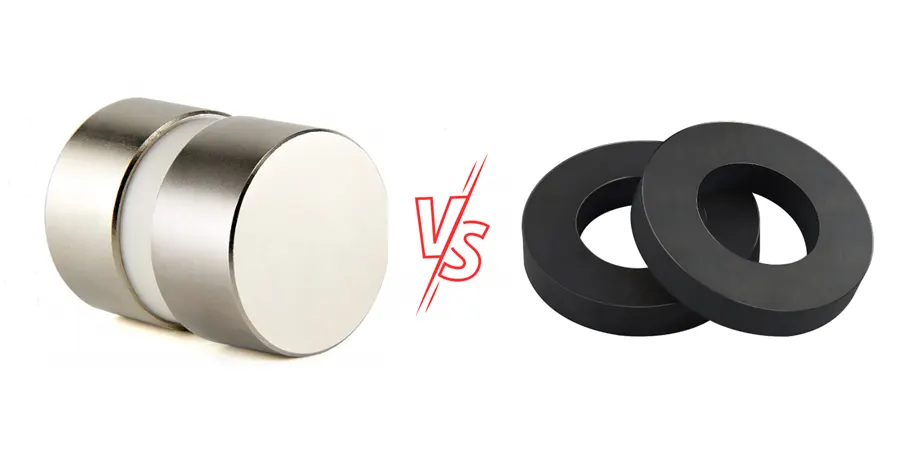
Magnetic Field Strength:
Neodymium magnets are renowned for their superior magnetic strength. They generate up to 20 times stronger magnetomotive field/unit volume than ferrite magnets. This implies that neodymium magnets are a good choice for fields where a strong magnetic field is required, for instance, in miniaturization and high efficiency electric machines. On the other hand, ferrite magnets have a lower magnetic field strength and are therefore better suited to situations with a high magnetic field strength, while cost-effectiveness should also be taken into account.
Coercivity (Resistance to Demagnetization):
Coercivity is the magnetic restoring force of an element against demagnetization in the presence of external magnetic fields. One of the key neodymium magnet strengths is in this respect, that they do not lose their magnetic force when subjected to reverse electric field and high alternating electric field at high temperatures (up to 230 °C) while exposed to electric field. Ferrite magnets are less heat resistant, but have smaller coercivity than neodymium magnets, so they are more likely to lose their magnetic force in certain situations.
Miniaturization Potential:
Neodymium magnets have an important advantage with regard to miniaturization. Due to their strong magnetic field strength, they can be scaled down with small neodymium magnets designs, and thus, they are quite suitable for constrained space applications. For instance, they are used extensively in cell phones, earphones and other miniature electronic devices. Ferrite magnets are more voluminous and generally applied in larger devices, e.g., loudspeakers, where volume playing is not that critical.
Heat Resistance:
In thermal resistance, the Ferrite magnets have better performance than the neodymium magnets. Although a number of neodymium magnets may be subjected to temperatures over 200 °C, they are typically more difficult to obtain than the lower temperature grades. In contrast, ferrite magnets are able to take a maximum temperature of 300 degrees Celsius and their coercivity also increases with the temperature rising. This means that as the temperature increases, ferrite magnets show greater resistance to demagnetization.
Rust Resistance:
However, budget is a concern, ferrite magnets are more affordable. They are produced from cheap raw materials and are also inexpensive to manufacture. Neodymium magnets have down points due to their weak corrosion resistance, however, in general, they should be supplied with a corrosion-resistant coating unless specifically stated that a coating should not be supplied. The baseline coating is nickel-copper-nickel (NiCuNi), which has the benefit of very corrosion resistance and a nice, unobtrusive appearance for most applications and does not require extra coating. This standard coating is cost-effective and adds only a minimal expense. Nevertheless, for tougher corrosive resistance applications, alternative coatings are costlier but remain a viable option. This leads to the possibility of using NdFeB magnets in a variety of corrosive settings without problems. On the other hand, ferrite magnets are, in principle, not coated. This difference affects a number of design compromises in favor of ferrite magnets.
Cost:
Cost is one of the most obvious differences between the two classes of magnets. Nd magnets are much more expensive not only with regard to price, but also with regard to high performance. When the budget is limited, ferrite magnets are less expensive. They are made from cheap raw materials and are cheap to produce. Neodymium magnets, which use rare earth elements, are generally more expensive. Ferrite magnets are composed of more available and cheap starting materials and are more economical to manufacture. That’s why they might fit small projects. If magnets are needed in bulk and for a product that does not contribute high profit, ferrite magnets have more economic utility.
Environmental Concerns:
Although Neodymium Disc and Ferrite Magnets are offered with their own advantages and applications, it is also necessary to look at the environmental effect of using the magnets. Neodymium Disc magnets are neodymium rare earth magnets materials, which are usually obtained via use of hazardous substances and methods. This may lead to soil/water contamination and human health impacts. On the other hand, Ferrite Magnets are less harmful to the environment as they do not contain any toxic materials.
Processing Difficulty:
Powerful neodymium magnets tend to be more machinable via processes such as grinding down neodymium magnets, cutting, EDM or abrasive water-jet- compared to ferrite magnets-especially for miniature applications with high precision. However, with these smaller pieces, the machining process is often the driver of cost rather than the material itself. While NdFeB (Neodymium Iron Boron) is relatively brittle compared to other metals, ferrite magnets are even more brittle, making machining more challenging. Consequently, there is a limit beyond which it is more economical to produce ferrite components rather than neodymium ones because of the increased complexity of the mechanical processing. Important to mention that with a reduction in the size of the parts to lower levels, the cost per kilogram may increase; the overall unit cost, however, is usually subject to a decrease. This is because, with smaller parts, the total cost is more influenced by surface area. As parts shrink, the ratio of surface area to unit volume increases.
The following table with characteristics of differences between Neodymium magnets and Ferrite magnets is given.
| Factor | Neodymium Magnets | Ferrite Magnets |
|---|---|---|
| Magnetic Strength | Up to 20 times stronger per unit volume | Weaker magnetic field |
| Coercivity | High, resists demagnetization better | Lower coercivity, more prone to demagnetization |
| Miniaturization | Excellent for compact designs | Larger sizes, are less efficient for small applications |
| Heat Resistance | Up to 230°C | Up to 300°C, better heat tolerance |
| Rust Resistance | Requires protective coating | Naturally resistant to corrosion |
| Cost | Expensive | More cost-effective |
| Environmental Concerns | Contains rare earth elements, extraction can cause environmental harm (soil/water contamination) | Less harmful, no toxic materials involved |
| Processing Difficulty | Easier to machine, especially for small, precision components (grinding down neodymium magnets, cutting, EDM, water-jet) | More brittle, harder to machine, particularly for small parts |
Neodymium and ferrite magnets have their own utility in the field of magnetics. Powerful Neodymium magnets are the best for applications with high performance in small size, including mobile electronics and high-performance motors. However, for large-scale applications, the magnetic strength is less critical, and thus ferrite magnets tend to be more appropriate. In Oscenmag, we mainly focus on neodymium magnets and neodymium magnet assemblies therefore offer you custom solutions according to the individual needs of each one. Regardless of whether you’re seeking the high performance of neodymium magnets we can help simplify your supply chain with strong manufacturing and agile services.
Maximum Working Temperature of Neodymium Magnets.
Neodymium magnets have grades and types with different capabilities of temperature resistance. The maximum operating temperature of a neodymium magnet means the highest temperature at which a magnet retains its magnetic properties without the loss of its magnetically stimulated ability. This is of particular importance for applications in environments where the temperature is both dynamic and high. With rising temperature, the neodymium magnet strength may start to deteriorate, which will inevitably result in performance degradation.
Neodymium magnets are typically marketed at different grades, with each grade corresponding to a specific magnetic performance level. The grades are usually denoted by “N” followed by a number (e.g., N35, N52 neodymium magnets), which indicates the magnet’s magnetic strength. The letter after the number, such as “N” or “M”… represents the magnet’s temperature resistance level. Powerful neodymium magnets generally offer better temperature tolerance and can withstand higher temperatures without significant loss of magnetic strength.
The maximum operating temperature of most neodymium magnets is usually between 80°C (conventional) and 230°C (AH temperature resistance grade). However, for extremely hot environments, neodymium magnets that have been crushed into nanocrystalline by Hydrogen Decrepitation can withstand higher temperatures. Below are the maximum operating temperatures and Curie temperatures of neodymium magnets for standard and special neodymium magnet grades:
| NdFeB Material | Max Operating Temp | Curie Temp | ||
|---|---|---|---|---|
| Grade | ºF | ºC | ºF | ºC |
| N | 176 | 80 | 590 | 310 |
| M | 212 | 100 | 644 | 340 |
| H | 248 | 120 | 644 | 340 |
| SH | 302 | 150 | 644 | 340 |
| UH | 356 | 180 | 662 | 350 |
| EH | 392 | 200 | 662 | 350 |
| AH | 446 | 230 | 662 | 350 |
FAQs
How are neodymium magnets made?
Neodymium magnets are manufactured by a multistep process which starts from the construction of raw materials (e.g., neodymium, iron, boron). These materials are melted and fused, forming an alloy that is milled to fine powder. The powder is ground and shaped under high pressure and sintered at high temperature to harden it by consolidating the particles with one another. The magnet is then permanently magnetized by being subjected to a high magnetic field which brings its magnetic properties into order. Subsequently, the magnet is cut and ground to the final dimensions and geometry. A protective layer (e.g., Nickel-Copper-Nickel) is normally provided to stop corrosion. Last, the magnets are tested to confirm performance and quality requirements.
Are neodymium magnets safe?
Neodymium magnets are strongly attractive, even from several inches away. The force is powerful enough to pinch skin and cause bodily injury. Depending on the size of the magnet, it could break a finger. If swallowed accidentally, these magnets have attracted across the membrane of intestines and other organs, causing severe damage and even death. Neodymium magnets should also be kept away from sensitive electronics like pacemakers, credit cards, and hard drives, as they can interfere with these devices. Additionally, magnets should not be exposed to temperatures above their specified limits, as this can result in a loss of magnetism.
Do neodymium magnets rust?
Neodymium magnets contain an iron component, have poor resistance to corrosion and can also corrode from the inside-out if proper pre-treatment processes are not followed. To prevent corrosion, the vast majority of neodymium magnets are electroless nickel plated, a three-layer nickel-copper-nickel coating. This specific plating combination has long been the coating of choice for corrosion protection. There are more combinations of magnet coatings that can be matched according to needs.
How long do neodymium magnets last?
Neodymium magnets are permanent magnets. Neodymium magnets can last for decades or even longer if they are properly cared for and handled. They are estimated to lose about 5% of their magnetism every 100 years.
How strong is a neodymium magnet?
Neodymium magnets are the most powerful permanent magnets available per unit volume. However, in terms of temperature resistance, samarium-cobalt magnets are the most robust. They are also known as NdFeB, or Neo magnets, and although they have a high force they are relatively light in weight and therefore exciting for numerous applications.
What are neodymium magnets made of?
Neodymium magnets (also called NdFeB, NIB or Neo magnets) are permanent magnets made from an alloy of rare-earth metals such as neodymium, iron and boron, forming a tetragonal crystal structure of Nd2Fe14B.
